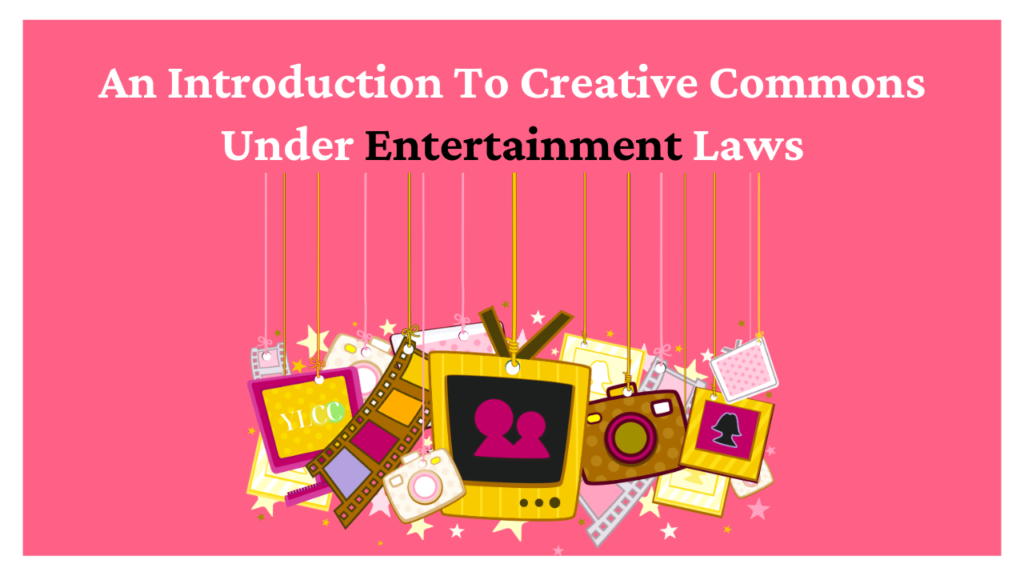
INTRODUCTION
People in order to innovate need to build on inventions and material that already exist in the world. But since the owners of the existing inventions or material expect something in return for their work, it cannot be expected that everyone would just give out the results of their hard work for free. But there are people who believe that in certain use cases use of their work doesn’t require remittance from the person using their work, hence they allow others to use their works with or without limitations to how their work can be used.
Creative Commons is a non-profit organization that has the motive to provide access to copyrighted work or knowledge for free with varying levels of restrictions on its use. The motive of creative commons is to remove technical and legal obstacles that come up, in order to fuel innovation that might come up as a copyright or trademark issue. The organization works by convincing the authors of creative works
The organization deals a with intellectual property law and entertainment law as they license works to a lot of organizations that make use of the work in commercial and non-commercial ways. The extent to which the intellectual property can be used is decided by its owner and varying levels of controls are provided to the licencees different levels of licenses.
ORIGIN OF CREATIVE COMMONS
The idea of the concept behind Creative Commons came up after the judgement given in Eldred v. Ashcroft.[1] The background of this case is that the constitutionality of the Copyright Term Extension Act, which extended the term of copyright by 20 years to 95 years, was questioned by Eric Eldred on the grounds that the many publishers were using the copyrighted content that have now entered the public domain and the intention behind the copyright law is to provide protection to the maker of the content for a reasonable amount of time but this act increases it to an unreasonable amount of time. The matter went before the United States Supreme Court and the court held that the increase in the amount of time is not unreasonable, the law was held as valid and Eldred lost.
So, the founder got inspired by Eldred’s ideology and founded the Creative Commons which would be a place where creative works would be freely available to others and allow the owners to own the copyright without having restricting terms for the use of their copyright.[2]
HOW CREATIVE COMMONS WORKS
Creative Commons licenses grant everyone to use a work in a certain way which the license defines. A Creative Commons license is different from a common copyright license as common copyright license requires the owner of the work to grant permission to each use of their work but a Creative Commons license sets guidelines for the person interested in using the work and doesn’t require the owner of the work to approve each use of their work.
Creative Commons licenses are applied only in materials for which copyright already exists, moreover the license would only be applicable if the particular use is not otherwise permitted by the copyright. The powers under the Creative Commons license are only applicable when the terms defined in the license are violated. All Creative Commons license are non-exclusive and are considered as additional to other licenses. Even though Creative Commons license are non-exclusive they are also non revocable unless there has been a breach of the terms of the license, but even then, the only the license in breach of contract is terminated.
TYPES OF LICENSES IN CREATIVE COMMONS
There are 6 different types of licenses that are offered by the Creative Commons and all of them provide varying level of control, they are[3]:
- CC BY – In this type of license, the licensee is given permission to distribute, remix, adapt, and build upon the material in any medium or format as long as credit is given to the creator. This license also allows for commercial use of the content being used.
- CC BY-SA – In this type of license, the licensee is given permission to distribute, remix, adapt, and build upon the material in any medium or format as long as credit is given to the creator. This license also allows for commercial use but if you remix adapt or build upon the material your work shall also be licensed under the same terms.
- CC BY-NC – In this type of license the licensee is allowed to distribute, remix, adapt, and build upon the material in any medium or format for non-commercial as long as credit is given to the creator.
- CC BY-NC-SA – In this type of license, the licensee is allowed to distribute, remix, adapt, and build upon the material in any medium or format for non-commercial as long as credit is given to the creator, but any material produced thorough this must also be licensed under identical terms.
- CC BY-ND – In this type of license, the licensee is allowed to copy and distribute the material in unadapted form. It is also mandatory for the licensees to give credit to the creator.
- CC BY-NC-ND – In this type of license, the licensee is allowed to copy and distribute the material in unadapted form. Only non-commercial use of the material is allowed. It is also mandatory for the licensees to give credit to the creator.
CONCLUSION
Creative Commons solves the problem for inventors that want to share their innovation with others for free. Since Creative Commons doesn’t require for individual approval of every request the inventor receives rather Creative Commons provides licenses to everyone and revokes the license in case the terms of the license are violated. Creative Commons makes the process of giving and getting a license easier, hassle free and secure as the use of material is according to the wishes of the owner of the copyright. Flexibility is also provided to the owner of the copyright by providing it varying levels of control that can be granted to the licensee.
If there is misuse of the licenses provided through Creative Commons, people will stop trusting the organization and the amount of new licensor coming in will lessen to a great degree. So, it becomes the responsibility of the organization to ensure that misuse of the license granted is not being done. In order to protect the intellectual property rights of licensor, Creative Commons works closely with government agencies so that it can be ensured that the licenses handed out are used correctly.
[1] Eldred v. Ashcroft, 537 U.S. 186 (2003).
[2] What is Creative Commons, https://certificates.creativecommons.org/cccertedu/chapter/1-1-the-story-of-creative-commons/.
[3] About CC Licenses, https://creativecommons.org/about/cclicenses/.
YLCC would like to thank Varchasva Agarwal for her valuable insights in this article.






